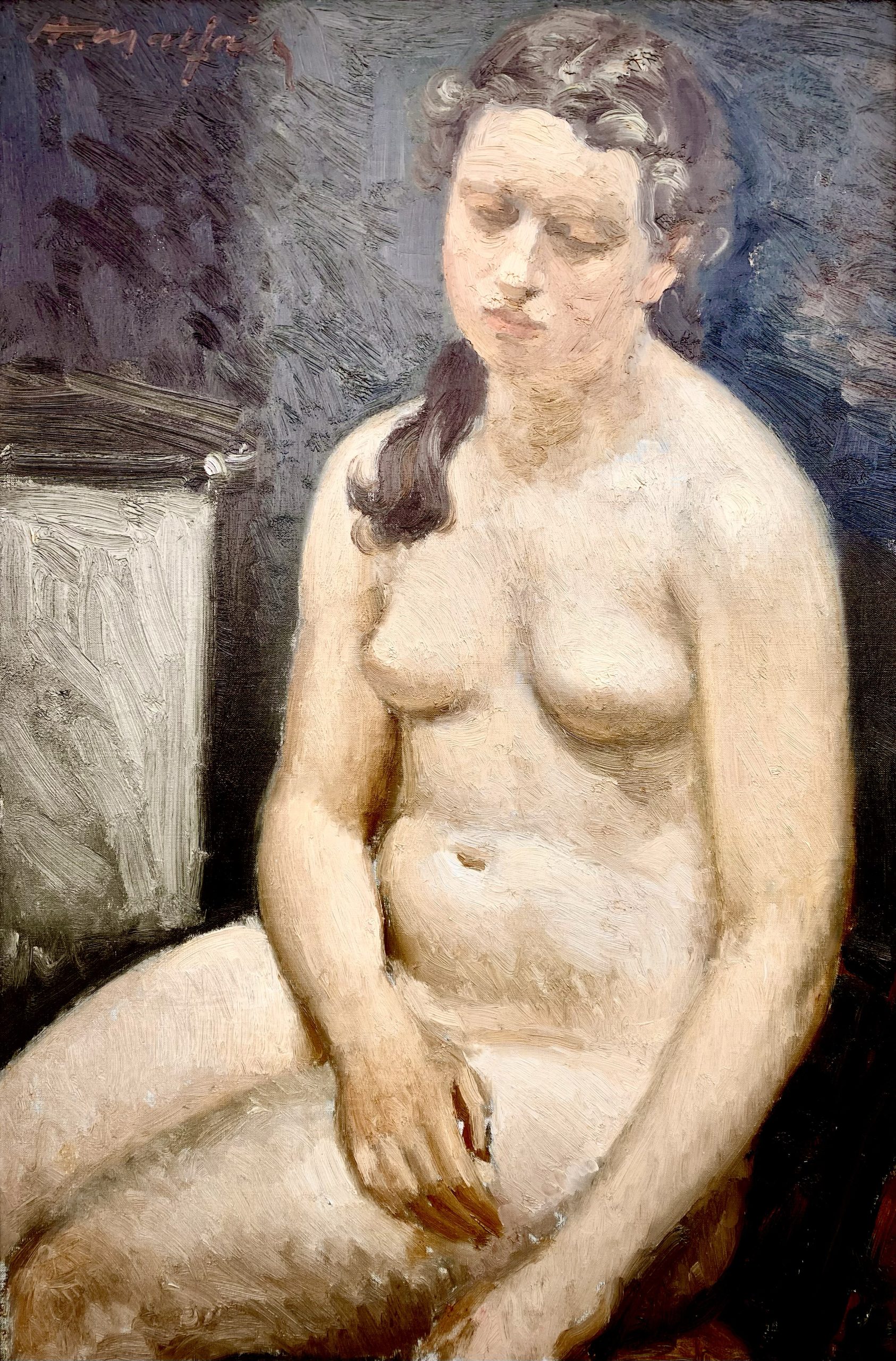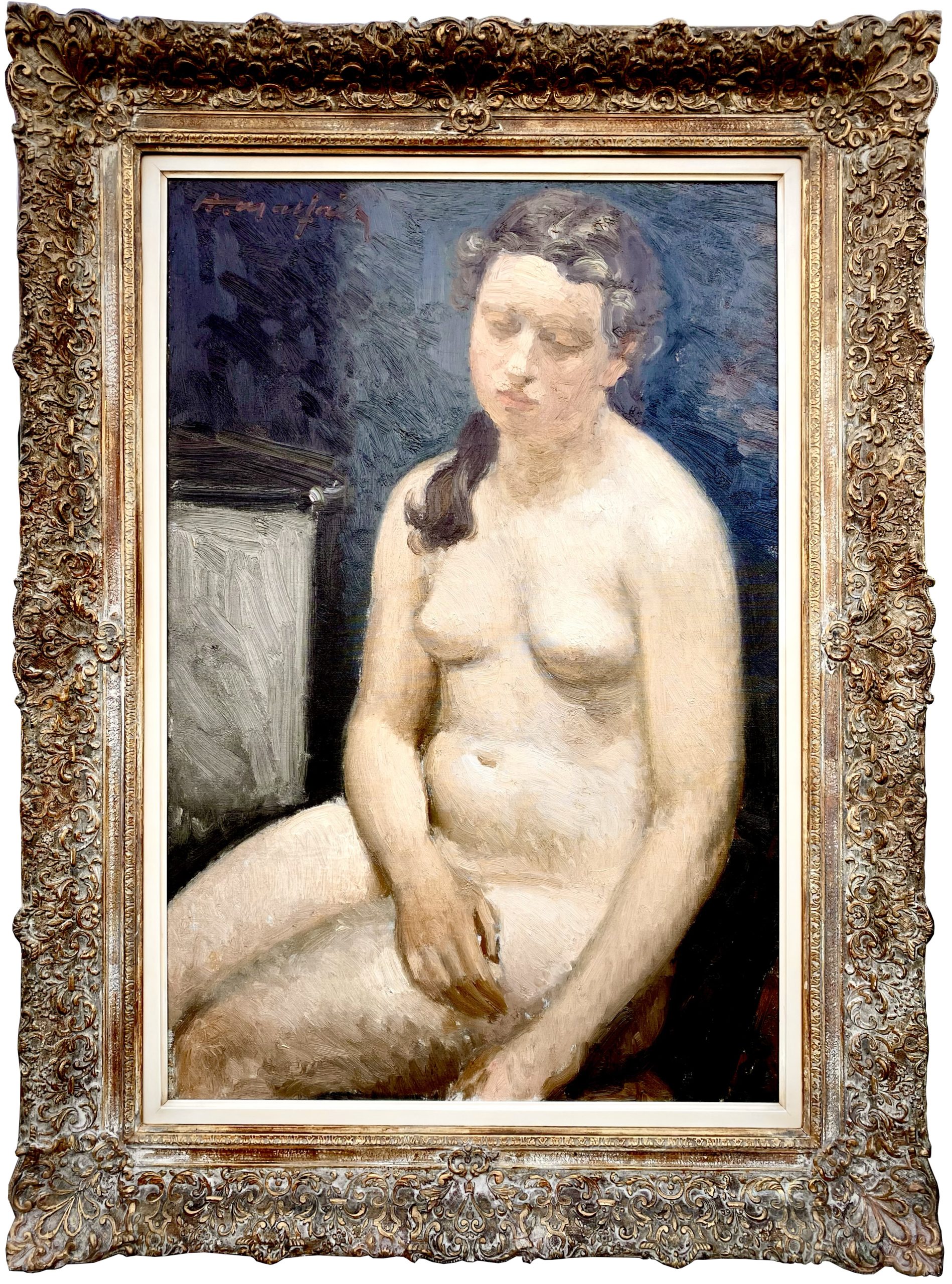Astene 1898 – 1971 Sint-Martens-Latem
Belgian Painter
+32 478 22 65 64 | info@valentinasafarian.com
Malfait Hubert
Astene 1898 – 1971 Sint-Martens-Latem
Belgian Painter
Signature: Signed top left
Medium: Oil on canvas
Dimensions: Image size 90 x 60 cm, frame size 114 x 84 cm
Malfait Hubert was a Belgian painter who belonged to the third Latem School. He was born in 1898 in Astene, Belgium, as the son of the local municipal secretary Jules Malfait.
Growing up amidst influential figures like Emile Claus, Valerius De Saedeleer, and Albijn Van den Abeele, who were friends of his father, Malfait developed an early affinity for art. During the war years, he studied at the Gent Academy of Fine Arts alongside Jules De Sutter.
A pivotal moment in Malfait’s career occurred in 1924 during the exhibition “Laethemsche Kunstenaarskolonie,” where he met critics André De Ridder, Paul-Gustave van Hecke, and Georges Marlier. This led him to become an integral part of the avant-garde expressionist group around Gustave De Smet, Frits Van den Berghe, and Constant Permeke. Progressive Brussels galleries strongly supported him, considering him the flagbearer of a new generation of expressionists.
Despite economic challenges and the bankruptcy of Le Centaure, Malfait’s primary supporter, in 1932, he continued to shape the Brussels art scene. Emmanuel de Bom defended him, asserting the vitality of expressionism. Malfait reemerged in 1934 with an exhibition at Galerie Louis Manteau.
In the 1930s, Malfait was a prominent figure in the Gent art scene, showcasing his works at venues like Ars and later at Galerie Vyncke-van Eyck. The economic crisis and Le Centaure’s bankruptcy affected Malfait, but he resurged in 1934 with an exhibition at Galerie Louis Manteau.
The war years marked a shift in Malfait’s exhibitions, with major solo shows occurring in 1944. He exhibited paintings in Galerie Brueghel and drawings in Galerie Apollo. The Museum voor Schone Kunsten in Oostende organized an extensive retrospective just before his death in 1971.
Malfait’s artistic evolution saw him transition from impressionism to expressionism, influenced by Eugène Laermans and Jakob Smits. His classical expressionist period began in 1923, characterized by archetypal figures in village scenes influenced by French post-cubism.
In the 1930s, Malfait’s work became more abstract and playful, inspired by fauvism. His post-1935 period reflected renewed humanism, emphasizing empathy, especially towards children. Travel experiences in Bretagne, South France, and the Netherlands influenced his color palette.
In his later years, Malfait embraced themes of nudity, field labor, and equestrian motifs. His art became more abstract, synthesizing elements and adopting a lyrical tone. Hubert Malfait’s journey in art spanned various styles, leaving behind a legacy that celebrated expressionism, color exploration, and a deep connection with human experiences.
He continued to evolve as an artist until his death in Sint-Martens-Latem, in 1971, leaving behind a legacy of contributions to the Belgian modern art scene. Today, his paintings are housed in both private and public collections.

© Copyright 2023 Valentina Safarian | Website by BEAUX SITES

